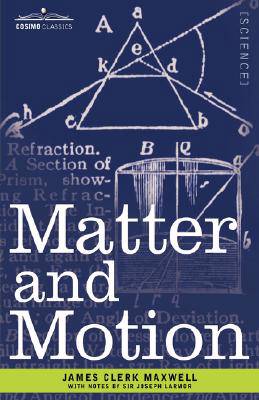
- Afhalen na 1 uur in een winkel met voorraad
- Gratis thuislevering in België vanaf € 30
- Ruim aanbod met 7 miljoen producten
- Afhalen na 1 uur in een winkel met voorraad
- Gratis thuislevering in België vanaf € 30
- Ruim aanbod met 7 miljoen producten
Zoeken
Omschrijving
This slim yet dense volume remains an excellent introduction to Newtonian physics, just as when it was first published in 1877. Beginning with the basics of physical science and working his way steadily up to universal gravitation, Maxwell surveys late-19th-century physics in his clear and concise style. Matter and Motion addresses: . motion . force . the properties of the center of mass of a material system . work and energy . recapitulation . the pendulum and gravity . the equations of motion of a connected system Readers from the science historian to the high school physics student will come away from Matter and Motion with a deeper understanding of the roots of modern physics. Scottish physicist and mathematician JAMES CLERK MAXWELL (1831-1879) is considered by many to be one of the giants of theoretical physics. Albert Einstein once described Maxwell's work as "the most profound and the most fruitful that physics has experienced since the time of Newton." A devoutly religious man and a published poet as well as a renowned scientist, Maxwell's books include Theory of Heat (1870), Treatise on Electricity and Magnetism (1873), and Elementary Treatise on Electricity (1881).
Specificaties
Betrokkenen
- Auteur(s):
- Uitgeverij:
Inhoud
- Aantal bladzijden:
- 184
- Taal:
- Engels
Eigenschappen
- Productcode (EAN):
- 9781602068537
- Verschijningsdatum:
- 15/10/2007
- Uitvoering:
- Hardcover
- Formaat:
- Genaaid
- Afmetingen:
- 140 mm x 216 mm
- Gewicht:
- 371 g

Alleen bij Standaard Boekhandel
+ 75 punten op je klantenkaart van Standaard Boekhandel
Beoordelingen
We publiceren alleen reviews die voldoen aan de voorwaarden voor reviews. Bekijk onze voorwaarden voor reviews.








